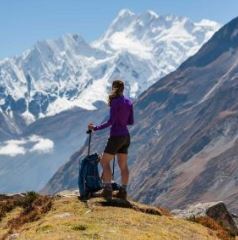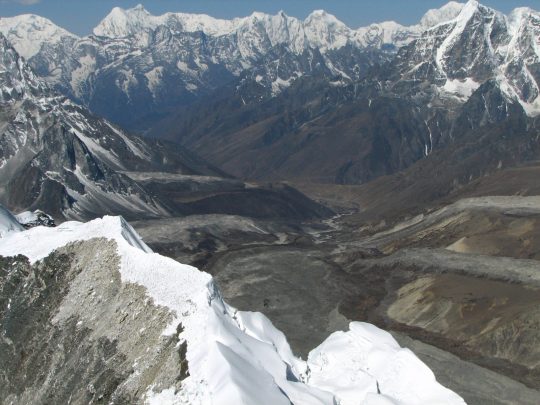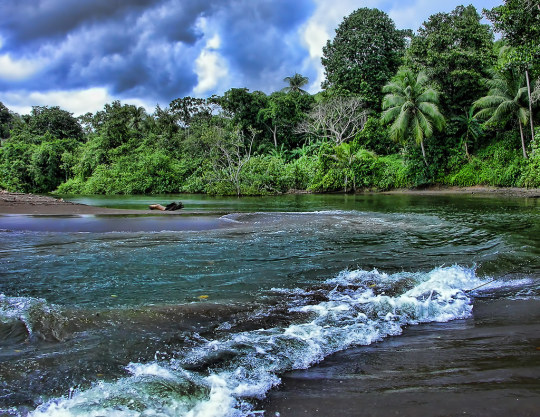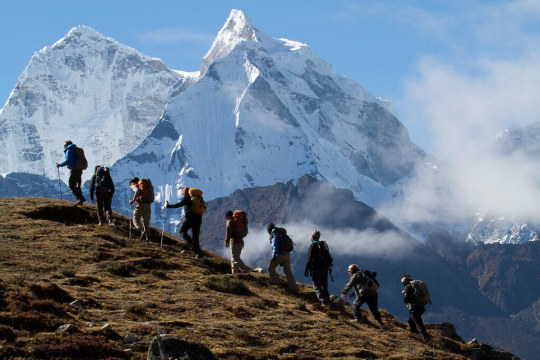Text

Trekking in Nepal is an adventure activity that gives you a unique experience for a lifetime. Whether in a group or solo, it is the must-experience activity on your bucket list, which will take you around the lush green landscape, flora and fauna, panoramic mountain view, and many more.
1 note
·
View note
Text
Top 7 Peak Climbing in Nepal: Expedition Nepal
Nepal is world-renowned for its wide range of peaks. It is known for its scenic beauty and mesmerizing tour. There are eight of the world’s highest mountains in Nepal alone, while it also has fifteen peaks between 5000 meters to 7000 meters.
Peak climbing in Nepal is a popular adventure activity for mountaineers worldwide, with many seeking to summit peaks such as Island Peak, Mera Peak, and Lobuche Peak.
Yes, all these peaks are included in the trekking options we provide. The Nepal Mountaineering Association (NMA) has classified these as “trekking peaks.” Hence, you can quickly scale and summit these peaks during your trekking journey.
You will need a separate permit if you have decided to scale these peaks. Not to mention, you should also be in your best physicality and mentality during the journey. Altogether, peak climbing is the beginning journey of your adventure days.
Top 7 Peaks To Climb While In Nepal
Nepal’s peaks are categorized as ‘A’ and ‘B’ grades. Hence, you might be overwhelmed by the myriad choices available during your journey. In addition, we have presented a list of top peaks to scale while suiting your taste and experience. Most of the mentioned peaks fall within your trekking region and routes.
Island Peak

Trekking Region: Everest / Solu Khumbu region
Maximum Altitude: 6189 meters / 20305 feet
Accommodation: Teahouses & Lodges trek or Camping / Camping at Island peak Base Camp
Difficulty Level: Little Difficulty
Trekking Duration: 16 days and above
Number of Climbing Days: 1–2 (including Island peak base camp)
Best Season: April to May, October to November
Located in the Chukkung valley of the Everest region, Island Peak does look like an island surrounded by higher mountains. This peak extends the ridge from the southern end of Lhotse Shar.
Also, this peak climbing is perfect for beginners and prepares them for a much more challenging climb. Generally, this peak is attached to the Everest Base Camp trek.
Highlights Of The Climb
Mesmerizing views of Everest (8848 meters / 29021 feet), Mt Nuptse (7879 meters), Mt Lhotse (8501 meters), Lhotse Middle Peak (8410 meters), Lhotse Shar (8383 meters), Mt Makalu (8475 meters), Cho Polu (6734 meters), Mt Baruntse (7720 meters), and Ama Dablam (6856 meters).
Explore the Sherpa village, Namche Bazaar.
Visit the ancient Tengboche monastery.
Experience the culture and lifestyles of the local Sherpa people.
Lobuche East Peak
Trekking Region: Everest / Solu Khumbu region
Maximum Altitude: 6119 meters / 19978 feet
Accommodation: Lodges and Camping to Lobuche East Peak / Camping on Lobuche peak
Difficulty Level: Easy
Trekking Duration: 14 days and above
Number of Climbing Days: 3
Best Season: Mid-March to May and October to Mid- December
For More Details Click Here
0 notes
Text

Nepal is a bucket list vacation destination for many, with mountains, ancient sites, architecture, tradition, culture, lush forests, and wildlife. Though a small nation in South Asia, there are many activities to do in Nepal and the same amount of reasons to fall in love with it.
0 notes
Text
0 notes
Text
0 notes
Text
Everest Base Camp And Island Peak: Autumn / Spring Climbing
Talking about the world’s natural attraction, the highest peak, Mount Everest, certainly leaves everyone in awe. This monstrous peak has been everyone’s dream destination for some adventure or sightseeing.
The trek to Everest Base Camp (EBC) is breathtaking, but how about adding some spice to the same route? It can be done with a little extension from Dingboche, where you will see an island in a sea of ice.
The Island Peak is an underrated trek that offers immense surprises and stunning views. Adding it to the Everest base camp makes it one of the most challenging yet mesmerizing trails to accomplish for all travelers and trekkers.
Everest Base Camp and Island Peak: An Overview
Island Peak is locally known as Imja Tse Peak. It is one of the rarest combinations with the Everest trek that provides a close view of glittering peaks, stunning glaciers, and the rich local culture of the Everest region.

This particular climb will give you a crystal clear view of the giant mountains such as Nuptse (7,879m), Lhotse (8,501m), Lhotse Middle Peak, and Lhotse Shar. All these treks and views take place in the Sherpa Land.
The Island Peak trek is pretty straightforward and can be accomplished by novice trekkers. However, adding it to the Everest Base Camp trek is tricky.
The highest pass during the Island Peak trek is at its summit, nearly 6200 meters above sea level. But as you walk up to the Everest Base Camp trek, you will need to pass some high altitudes such as the passes of Renjo la (5388 meters), Cho La (5380 meters), and Kongma La (5535 meters). These high passes link the four valleys of Bhotekoshi, Gokyo, Imja Tse, and Khumbu.
Best Seasons For This Trek
The best seasons to trek or travel in Nepal are Autumn and Spring. Yes, it also applies to Island Peak and Everest Base Camp trek.
During Spring, the weather is much clearer, with flowers blooming and dry leaves on the trails. Also, the skies are blue, which livens the atmosphere and makes up splendid scenery. Likewise, the temperature is also pretty favorable as it’s neither too cold nor too hot.
Furthermore, the trails are filled with lush green forests. During Autumn, the trees start to change their colors. Similarly, the temperature in this period gets mild, with a warm day and a slightly cold night.
But, of course, the winds start rushing around the valley, and hence, it is a bit less favorable to trekkers than in Spring. Not to mention, a few trekkers also embark on this journey during Winter, but yes, the temperature gets freezing.
Winter also has its charm as it offers snow-covered views all over. It is indeed a heavenly scene.
Difficulties During This Trek

For More Details Click Here
0 notes
Text
Great Himalayan Trail: The Exclusive Trail in the world
Great Himalayan Trail a remarkable trail which takes to you along the glorious Himalayas, stunning landscapes, delightful green forests, remote hidden valleys, and exciting terrains. Trekking in Great Himalayan Trail will undoubtedly give you the ultimate experience, also trekking in this route will contribute to the locals residing in that region.
“Great Himalayan Trail” is a new title replacing the old and original one “The Great Himalaya Trail.” The original trail was a route across the country from east to west, and the new trail adds a collection of various trail in the upper and middle district of Nepal to the original route. The aim behind introducing a new brand was to open up new trekking products and support inclusive rural development in these regions.
As the Himalayan range is vast and many parts of it are yet to be explored, the trail is always changing, so it is impossible to mark the exact route of trekking. However, no matter which route you choose while trekking in Great Himalayan Trail, it will give you the best experience. It is a once in a lifetime opportunity as Great Himalayan Trail is one of the longest and highest trekking trails in the world.
The trek is perfect for those who are looking are a cutting edge of adventure travel. Great Himalayan Trail has a most dramatic trail, and it traverses entire Nepal from east to west in the shadows of world’s highest peaks. Along with tallest mountains of the world, there are many high passes above the height of 5,000 meters too.
Great Himalayan Trail is composed of ten varying sections from Kanchenjunga on eastern border to Humla on the western border with Tibet. The trail passes from subtropical jungles to high altitude alpine ecosystems through quaint villages of Buddhists, Sherpas, Hindus, Tibetan refugees, Lhomis, Shamans and many other ethnic groups; these are not exactly the trekking path but the result to the lack of infrastructure development. It is the existing network of primitive trade and pilgrimage trail that have been in use by locals for over centuries.
History of Great Himalayan Trail
In order to explore and understand more of the Great Himalayan Trail, an official expedition took place in 1950 when Nepal opened its borders to the other countries for the first time. For this expedition, early climbing pioneers mostly from western countries came to Kathmandu for the opportunity to face off against the tallest mountains of world. In that year, Annapurna I was the first 8,000 meters mountains to climb, and in May 1953 the history was written when Tenzing Norgay Sherpa and Edmund Hillary successfully climbed the Everest and returned safely. During that time, many things were yet to discovered and known. Edmund Hillary and his group spent several months hiking in Kathmandu through jungles and faced many obstacles to reach Solukhumbu region and Everest Base Camp. Sherpas of mountain region are known to the world as a fearless and daring mountain climber, and the starting point of it was when they got convinced to help on the expeditions. And even the famous Annapurna Circuit trek was not a circuit trek; it was just a basic path of commerce for local villagers.
By the year 1960, a general idea came regarding Nepal could be one of the trekking havens in the world. Then gradually, the flow of tourist increased every passing year,and soon Nepal established itself as a hub of adventure tourism. Trekking destination like Everest Base Camp and Annapurna Circuit ruled the trekking business of Nepal. But, very soon the roads in Annapurna Circuit slowly led to the deterioration of trail and trekkers started looking for other options realizing the great Himalayas of Nepal has much more to offer. And, it proved to be correct, as there is thousands kilometer of trails through remote and hidden valleys and villages which has the same ambiance as famous treks.
Then in 2009, the Great Himalaya Trail was introduced to the world. The trail is still a rough patchwork of local footpaths, but after spending five years on research, documentation,and mapping, the Great Himalaya Trail was walked in 2008 and 2009 by a team in 162 days led by Robin Boustead. And, the first commercial took place in 2011 from February through August and was accomplished in 157 days.
As the length of the Great Himalayan Trail is prolonged compared to others, the trail is less visited. But despite your trekking in Great Himalayan Trail in full length, it offers you the best route of the world,and it will change your perspective about trekking in Nepal.
0 notes
Text
Top Eight Eight-thousanders in Nepal
Everyone remembers the name of the elite, be it a person or a thing. If truth to be told majority of people in this world haven’t heard name of Nepal, but they even for a once they have been went by the name of Everest.
With the presence of some of the eminent peaks in the world, Nepal has been center for trekking and mountaineering for over the years. The fact that Nepal homes eight out of fourteen tallest peak is quite hard to dissolve, as Nepal is confined within the limited periphery.
Well, let us take a look at this glorious peak which are proudly and pristine too.
Mount Everest
Located at an elevation of 8,848 meters, Everest is the tallest mountain in the world. First scaled in 1953 by Tenzing Norgay Sherpa and Sir Edmund Hillary, the charm and excitement of Everest are still intact.
However, the throng of climbers to Everest has become a threat now. Due to the climate change, the rising temperature has resulted in melting of ice making the expedition more vulnerable. As per the research by International Center for Integrated Mountain Development, Khumbu glacier is retreating at an average of 65 feet per year, increasing the risk of avalanche. Also, with the increase in climber, the area’s environmental balance is upset.
The changes and effects are drastic, but as a climber, you can always constitute through small efforts like taking care of your waste, using a single bottle throughout the journey and so on.
Kanchenjunga
Although Kanchenjunga is the third tallest mountain in the world, it is sparsely visited because of difficulty and remote location. The mountain rises at an elevation of 8,586 meters in the eastern border of Nepal with the Indian state of Sikkim.
Meant for the adrenaline junkies, Kanchenjunga is an absolute pleasure with divine beauty and unspoiled wilderness. Also, the cascading waterfalls, lush vegetation and thousands of species of plant make Kanchenjunga even more rewarding.
Looking at the regions of Nepal, eastern is way more developed than the west. However the remoteness of this terrain, rugged trails, scattered human habitation, and monsoonal downpours have made the journey challenging. Here is another interesting fact; it is believed that Kanchenjunga is home to a mountain deity which is type of yeti. In 1925 a British geological expedition spotted a bipedal creature when asked to the locals, they referred it as the Kanchenjunga Demon.
Along with the serene beauty and fascinating tales surrounding the region, journey to Kanchenjunga also gives a different picture of cultural diversity in Nepal.
Lhotse
With the connection via south col, Lhotse is the part of Everest massif. And adhering to this fact, Lhotse means ‘south peak’ in Tibetan dialect. It is the fourth tallest peak in the world rising at an elevation of 8,516 meters above sea level. Along with the main peak, the mountain homes two significant peaks Lhotse Middle at 8,414 meters and Lhotse Shar at 8,383 meters.
Initially, Lhotse was attempted by 1955 International Himalayan Expedition team, and it was also the first expedition team to include Americans. However, the team was beaten back by unexpectedly strong wind and low temperatures.
Then in 1956, the main summit of Lhotse was scaled for the first by a Swiss team. However, it took some time to climb Lhotse Shar which was finally ascended in 1970. But the third one, Lhotse Middle remained highest unclimbed peak on Earth for a long time, and then in 2001, this peak was too scaled by a Russian expedition.
Makalu
The fifth tallest mountain in the world, Makalu stands at an elevation of 8,485 meters. Although it is the one of the tallest mountains in earth, it is an isolated peak with a shape as a four-sided pyramid. In addition to the main peak, Makalu has two notable subsidiary peak, Kangchungtse or Makalu II at 7,678 meters and Chomo Lonzo at 7,804 meters.
As the Makalu lies within the protected area of Makalu Barun National Park, you will also witness the wide diversity of floral and faunal species. The delightful forest of rhododendron, oak, primrose, orchids, bamboo, etc will certainly make you hold your breath. Looking at the wildlife, leopards literally rule this area. However, other animals like musk deer, red panda, red fox, and otters can be found too. Inhabitants of park have 88 species of mammals, 43 species of reptiles, 16 species of amphibians, 78 species of fish, 315 species of butterflies and 440 species of bird. Well, the expedition to Makalu holds a lot more than just Himalayas.
Cho Oyu
Cho Oyu might be one of the tallest mountains, but scaling it is considered less challenging than other towering peaks. Located at an elevation of 8,188 meters, it is the sixth tallest mountain, meaning ‘Turquoise Goddess’ in Tibetan language.
At first, Cho Oyu’s height was measured at 8,150 meters and was considered as the seventh highest mountain in the world. However, further study in 1984 proved the estimation wrong and established the height at 8,201 meters. Then new measurements made in 1996, placed the height at 8,188 meters.
Cho Oyu was first climbed on 1954, October 19 making it fifth 8,000-meter peak to be climbed. The peak is considered to be the easiest eight-thousander because of its lowest death-summit ratio. It is often marked as ‘trekking peak’ achievable for climbers with high fitness level but low mountaineering experience. So, if you want to scale one of the eight-thousanders, then Cho Oyu will be the ideal start.
Dhaulagiri I
Dhaulagiri massif is vast mountain range extending 120 kilometers from Kali Gandaki river to Bheri. The massif along with other peak harbors Dhaulagiri at 8,167 meters which is in seventh position of tallest mountains. The name of Dhaulagiri is derived from Sanskrit where dhawala means dazzling, white, beautiful and giri means mountain.
Dhaulagiri was first climbed in 1960 via northeast ridge, which is also the easiest route of all.
Manaslu
Manaslu, the eighth highest mountain in earth at 8,163 meters is an opportunity to have some tranquil time in pristine trail away from the crowd and smog of city. The name of the peak itself means ‘mountain of spirit.’
Journey to Manalsu is a complete bliss where you trek on ancient trail, enjoy authentic culture and custom of heartwarming peoples while witnessing the awe-inspiring view of Manaslu and its neighboring peaks. With its remote location, the area hasn’t been commercialized yet, so the beauty and purity of surrounding area are intact. The culture and tradition of this area are very much influenced by that of Tibetans. Buddhism is predominant in this region with monasteries, prayer flags and architecture and tradition depicting the religion all the way.
Manaslu was first climbed in 1956 by a Japanese team. Along with the adventurous expedition to the summit, Manaslu region also offers variety of trekking options. Another interesting thing is Manaslu is a conservation area with a basic objective: To conserve and sustainable management of natural resources and rich cultural heritage and to promote ecotourism to improve livelihood of local people in Makalu Conservation Area region.
Annapurna I
Annapurna I is the tenth tallest peak in the world at 8,091 meters as a part of Annapurna massif. Annapurna region is the classic and legendary trekking zone of Nepal with thirteen peaks over 7,000 meters, sixteen more over 6,000 meters and one, the Annapurna I itself over 3,000 meters.
Along with the irresistible beauty of Himalayas, the lush and delightful forest, beautiful farmland, diverse scenery including mountains and lowlands, cultural exposure of various ethnic communities has made the area one of the most pleasing treks in the world.
First climbed on 1950, Annapurna I is also the first eight-thousander peak to be climbed. The peak and the entire massif is within the Annapurna Conservation Area (ACA), where Annapurna Conservation Area Project works to conserve natural resources of ACA, to bring sustainable socio-economic development in local community and to develop tourism while minimizing negative impact on environment.
0 notes
Text
Our Pick For The Best Places For Ecotourism in the world
When we think of traveling, it is easy to think of the insta-perfect location with exotic views and sights to see. However, reducing the impact of your travel must be of equal importance. Indeed, it is to be well aware of your carbon footprint and how you can minimize the effects to help make your trip green and sustainable while still enjoyable.
It is true that over the years, people have become much more concerned with their impact on the environment, mainly due to the hits of past events. Hence, the popularity of green travel and ecotourism in the world has shot up as travelers seek destinations that benefit both the environment and the local communities.
Indeed, exploring the best ecotourism places will help the environment and give you a sense of fulfillment and enjoyment. This is the chance to come close to untouched nature and be there in the moment. Herewith, if you are up for such ecotourism destinations around the globe, do stick with us.
Overview of Ecotourism
Do you agree that “ecotourism” and “green travel” have been thrown around quite often? Yes, you do hear it a lot more often than you used to in the past days. But what exactly does this term mean, why do you think it is this important, and where can you find these ecotourism destinations worldwide?
Well, learn all those attributes right here!
Ecotourism, Its Importance, And Destination
In simple words, ecotourism is an opportunity to enjoy untouched nature without leaving any of your trails behind. It is responsible travel that not only gives you complete joy but also conserves the environment and sustains the well-being of the local people.
And as a traveler following the vision of ecotourism, you are called the green traveler. Green travelers are mindful of their actions in the environment and see the world through the lens of sustainability.
Having said all of those, it must have also been somewhat clear why ecotourism is essential for everyone. Traveling is fantastic, witnessing a culture you have never experienced before and standing on land you have never gone to.
One of the reasons why ecotourism is essential is simply cause we would love the upcoming generations to feel and see the exact thing we do now. It is the conservation of environmental resources for a longer timeframe.
Altogether, ecotourism is not about visiting a trendy destination at all. Ecotourism destinations often tend to be tourist hotspots, but travel is limited. Overall, if you are hooked on the concept of ecotourism, below are some of the ecotourism places in the world you should visit.
Costa Rica

Costa Rica is a tropical destination and boasts rainforests, cloud forests, countless beaches, volcanoes, and mountains. At the same time, they also have 26 National Parks, 58 wildlife refuges, 32 protected zones, 15 wetland areas, 11 forest reserves, and eight biological reserves.
Yes, 26% of their total land is covered with the conserved areas, and among them all, Corcovado National Park is the base for ecotourism.
Some of the activities you may enjoy while in Costa Rice are below.
Go whale watching in Costa Rican waters.
Enjoy volcano hopping.
Visit the coffee plantation area.
Scuba dive on Caño Island.
Iceland
One of the dream destinations for most travelers, Iceland is famous for its volcanoes, geysers, hot springs, and lava fields. Not to mention, they are also home to the Northern Lights or Aurora Borealis.
Additionally, Iceland is also known for its abundance of geothermal energy. Often this gives them the natural hot springs and spas like the Blue Lagoon. Thingvellir National Park, Vatnajökull National Park, and Skaftafell National Park are some of its top ecotourism locations.
Some of the activities you may enjoy while in Iceland are as below.
Glacier walks and walks around lava fields with a local in the Westman Islands.
Horse riding in Stora Asgeirsa, Hestaland, and Skeiðvellir.
Visit the Blue Lagoon.
Snorkel between two continents, the American and Eurasian.
Paddle around Stokkseyri.
Bike in the Icelandic mountains.
Kenya

Indeed, these reserves that were open to the public attracted loads of tourists, gradually increasing poaching. Hence, the government stopped illegal poaching and banned single-use plastics and plastic bags. Indeed, they have the strictest ban on plastics while supporting sustainable tourism.
Some of the activities you may enjoy while in Kenya are as below.
Go for a safari in the Great Rift Valley.
Enjoy horseback or safari in Chyulu Hills.
Explore that land of Maasai Mara.
Visit the Meru National Park.
Bhutan
One of the most expensive travel and yet one of the most sustainable travel, Bhutan is an ecotourism destination. Since 1991, they have been imposing a daily Sustainable Development Fee of $200 per day. All this collected money goes to reduce the possible carbon footprints of travelers.
In 2017, they were the first nation to be carbon negative. All in all, they are also involved with an ecotourism project – ‘the homestay program.’
Some of the activities you may enjoy while in Bhutan are as below.
Hike To This Heavenly Place, Trashiyangtse.
Bird watching in Bumdeling Wildlife Sanctuary, Jigme Dorji National Park, Jigme Singye Wangchuck National Park, Adjoining India’s World Heritage, and Thrumshingla National Park.
Enjoy hot springs at Gasa Tshachu, Dhur Tshachu, Chuboog Tshachu, and Duenmang Tshachu.
Try archery at Changlimithang Archery Ground.
Explore the Bhutanese cultures through Bhutan Postal Museum, Royal Heritage Museum, and National Handicraft Emporium.
Chile

The brand’s founder, North Face, has made a massive contribution to this deal as they made the most significant land donation in world history. Regarding its natural beauty, Chile is best known for its jagged granite peaks, lakes in startling shades of turquoise and jade-green, and glaciers.
Some of the activities you may enjoy while in Chile are as below.
Enjoy amazing views of the Pacific sea waters and wildlife from Pan de Azucar National Park.
Hike along the palm tree forests in La Campana National Park.
Explore the lava rivers of the Osorno and the Monte Tronador volcano at Vicente Perez Rosales National Park.
Experience the native wildlife at Torres del Paine National Park.
Witness the Tapati Festival.
Try landscape photography at the glaciers of Patagonia and Antarctica.
Go for rafting trips on the rapids of the Maipo River or skiing in the Navarro Valley.
How To Travel Responsibly?
Although the primary concern of starting green travel is primarily in the hands of the government, every individual traveler also does play a part in this situation. Travelers must make active choices to travel responsibly without harming others for their fun.
Minimize your plastic waste during travel, as most places do not have recycling options. One of the ways you can reduce your waste is to pack water and food in reusable containers.
Respect the environment – stay on paths, don’t leave rubbish, and avoid touching wildlife.
You can opt for an eco-friendly mode of transportation to reduce your carbon footprint. You can book flights or trips with low carbon footprints or even walk, bike, use public transportation, or take electric trains.
As you are adventurous with your destination, try being adventurous with the foods. Try local cuisines on any chance you get.
Go for ecotours where you can visit remote villages, interact with the locals, and enjoy.
Stay at local and eco-friendly accommodations.
Frequently Asked Questions
Why is ecotourism important?
Ecotourism is responsible travel that enhances residents’ quality of life while helping to preserve the environment. It is more crucial than ever to encourage sustainability as the number of tourists grows.
Why choose ecotourism?
Ecotourism operations promote environmentally friendly travel that minimizes adverse environmental effects while benefiting local communities, culture, and legacy. It is not motivated by financial benefits but by teaching tourists how to travel sustainably. In sensitive areas, offering lodging that limits mass tourism assures that the asset’s natural regeneration rate is not harmed and that the resource will last for a long time.
1 note
·
View note

